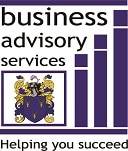There you are, running around in small circles with deadlines to meet and bills to pay. Can you really afford the time required to produce a detailed budget? Isn’t your time better spent generating revenue?
Yes and no. To paraphrase Alice and the Cheshire cat: “If you don’t know where you are going, you are sure to get somewhere if you only walk long enough”. The budget provides you and your investors with a numerical map that leads somewhere specific.
What is a budget?
A budget is a forecast of revenue, expenditure and profit. Most budgets are revised annually.
What does it achieve?
There are two (often overlapping) reasons for producing a budget. One is to persuade potential investors that your company is a good bet. The other one is to plan your business finances – how much money do you have and how do you plan to use it? How much revenue do you need to generate to achieve your target profit? Is your business plan viable or does it need adjusting? In retrospect, did the year pan out the way you planned, or did something go wrong?
How to approach a budget
First, find out how your accounting software deals with budgets. It’s far more efficient to use the same package for accounting and budgeting. Next, meet your accountant to plan how to structure the budget. Arrive prepared, with a chart of accounts and a list of informed questions. Take copious notes.
Traditional budgets are very difficult for start-ups and firms with a short history, because there is little or no historic data. Revenue is particularly problematic, because no matter how carefully you have planned, it’s impossible to predict the future. There are two main approaches to budgeting:
The projections approach
Here you enter projected costs and projected revenue, and calculate projected profits from these. This is reasonable and rational if the company has several years of relatively stable history to project from. If it’s a new company, such a budget is likely to become an exercise in denial and wishful thinking.
The required profits approach
An alternative method is to enter projected expenses, and then calculate how much profit you require, and how much you think you can actually generate.
Eventually this should be enough to pay your salary and provide a return on your investment in the company. However, it might be realistic to plan for a loss in the first year or two, and only a small profit for a year or two thereafter.
Having settled on a number, you now add expenses to profit to come up with your required revenue.
Turn this number inside-out. Is it realistic? Is it achievable? Instead of guessing wildly how many widgets you may be able to sell, or how many hours you hope to bill, you can now soberly assess whether you will be able to reach your targets. Don’t have 10,000 billable hours in the year? Can’t afford enough machinery to make a million widgets? Go back and adjust the business plan.
Once the company is liquid, determine your salary based on what you would be earning if employed in a similar job, and your return on investment based on the interest you would receive if investing outside the business.
EXPENSES
Fixed costs
Fixed expenses remain the same regardless of sales volume. They include rent, loan repayments, and insurance.
Semi-variable costs
These are costs with fixed and variable components, such as telephone, salaries and wages. The fixed component is the minimum cost of supplying goods or services, while the variable component changes depending on sales volumes.
Variable costs
Variable costs increase or decrease in line with sales, and include costs of materials, distribution and commissions.
Start-up costs
Initial costs must be factored in for a start-up.
REVENUE
If you use the required profits method outlined above, you will have generated a total figure for required revenue. This is a goal rather than a prediction. You need to break it down to decide how many of what you need to sell, what you need to charge, and whether the targets are realistic. It has the added advantage of generating very clear monthly sales targets.
Once the business has been running for some years, revenue will be predicted in a more conventional way, based on past performance.
MONITORING THE BUDGET
Once you have set up the budget, compare it to the actual figures every month, to look for differences and establish why they are there. Adjust expenditure or sales efforts as you go along, to bring the next group of numbers in line with the budget.
For help in preparing your budget or cash flow forecast, email us at enquiries@bizadvice.co.nz
